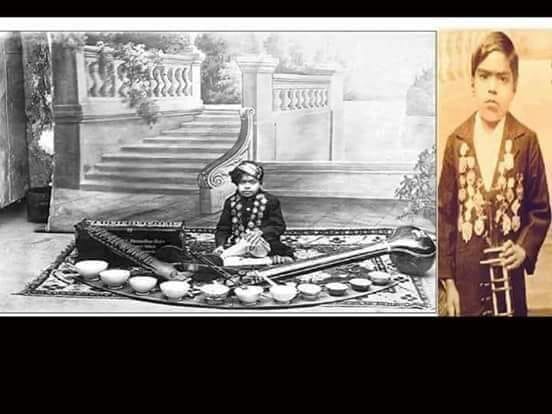Hindustani Classical Vocalist and Child prodigy Master Madan

•• Remembering Eminent Hindustani Classical Vocalist and Child prodigy Master Madan on his 93rd Birth Anniversary (28 December 1927) ••
Master Madan (28 December 1927 - 5 June 1942), a child prodigy (not to be confused with music composer Madan Mohan), died at the young age of 14 years, sang only a few songs which are everlasting and embedded in perfection. During his lifetime he recorded only 8 songs. Of these, only two Ghazals are available publicly. These are the famous, 'Yun Naa Rah Rah Ke Hame Tarsaiye' and, 'Hairat Se Tak Raha Hai'. The other six songs are very rarely found, and of great archival value.
Master Madan was born on December 28, 1927, in Khanna, a village in Jalandhar district of Punjab. He sang in public for the first time when he was three and a half years old, in a rally arranged by Dharampur Sanatorium. The audience was understandably spell bound. He was given many gold medals right there and then. After that he and his elder brother toured all over India and collected many prizes from the rulers of many princely states. They sang in the famous Harvallabh Mela of Jalandhar city and later in Shimla. Reportedly, in the Shimla Sammelan, many notable singers had also come, but thousands were eager to listen to Master Madan only.
At the age of eight, he was a famous radio singer, singing mainly on Delhi radio station on Alipur road. His final public program took place in Calcutta at age 14. He sang, 'Vinati Suno Mori Avadhpur Ke Basiya' for 90 minutes with such beauty that the public refused to go home. One patron respectfully offered Rs. 500, a princely sum in those days, on his feet. Also 9 gold medals were announced by various patrons to be given to him. In those days, gold medals were really made of gold. He returned to Delhi and kept going to the Delhi radio station for about 3-4 months. Soon he started getting sick. Many remedies were tried but nothing helped.
In the summer of 1942, he went to Shimla, where his forehead, and joints started to shine unusually. The genius with his immortal voice died on June 5, 1942, several months short of his 15th Birthday, suffering a great deal of pain. On his death, Shimla closed down and a huge gathering accompanied him on his last journey. He was cremated wearing all his medals.
There had been many rumours about the cause of his death. One such gossip went that at one time when he was performing at Ambala, a local singing girl had invited him to her Kotha and gave him a doctored paan (betel leaf). Another said that at Radio Station Delhi, he was given mercury in his drink by a jealous performer. Yet another was that in Calcutta, after his sensational concert at which he sang a thumri- Bintee suno meri, someone gave him a slow-acting poison in his drink. It was noticed in retrospect that he never recovered his voice after that particular performance.
However, the fact is that it was the greed of the family or envy of the rivals that killed the child-prodigy - Master Madan, leaving behind recordings of just eight classic classicals.
On his Birth Anniversary, Hindustani Classical Music And Everything pays rich tributes to the deceased young master and are proud of his achievements at the very young age! ![]()
![]()
लेख के प्रकार
- Log in to post comments
- 72 views
